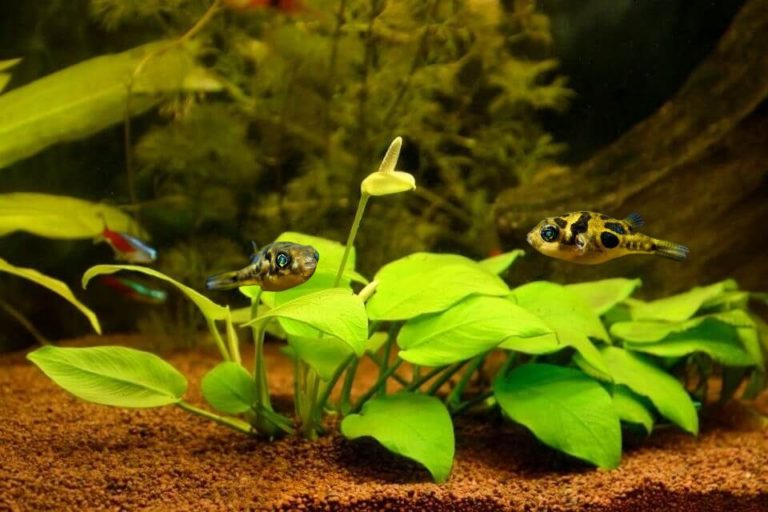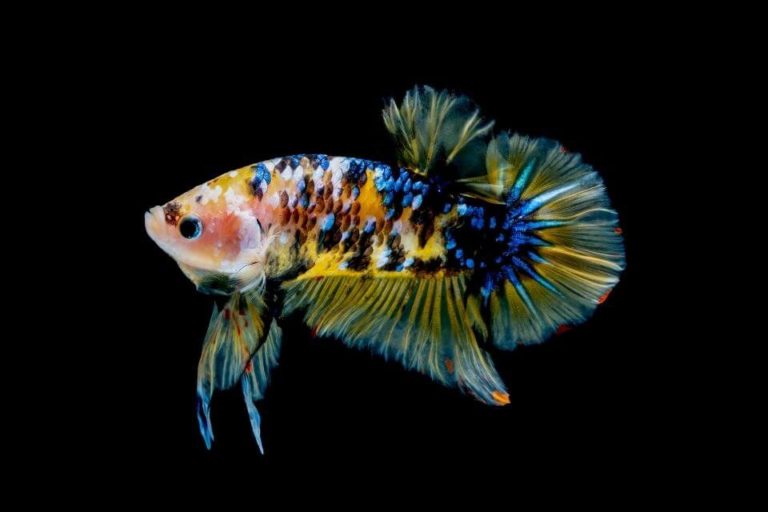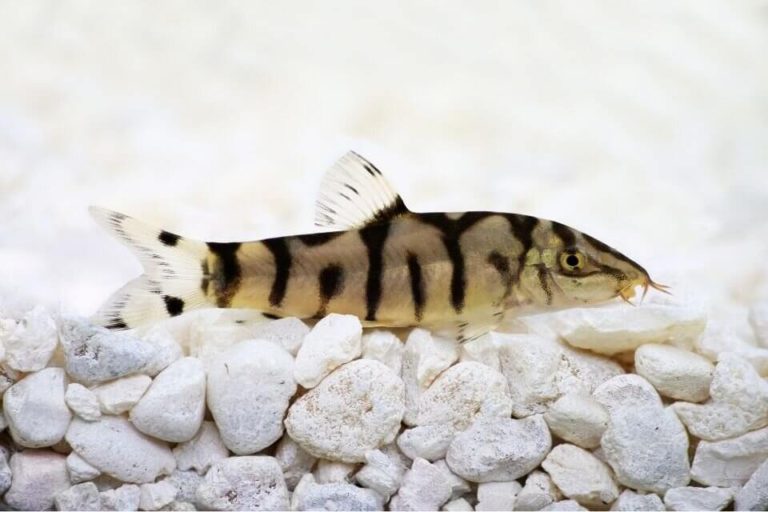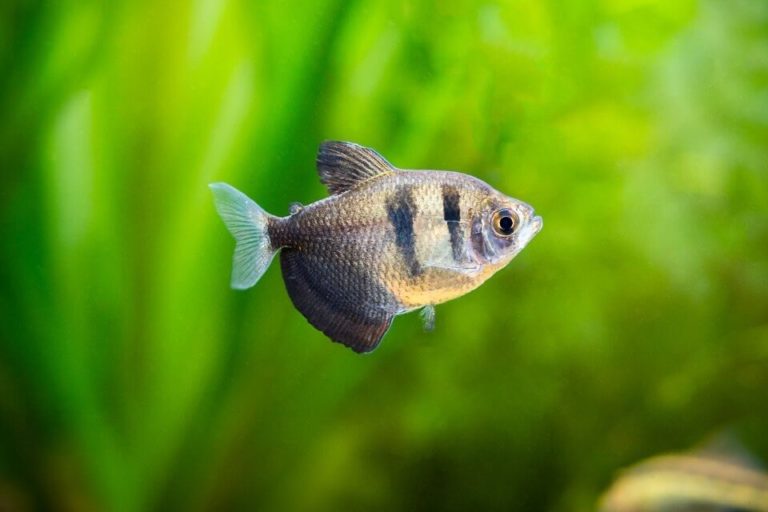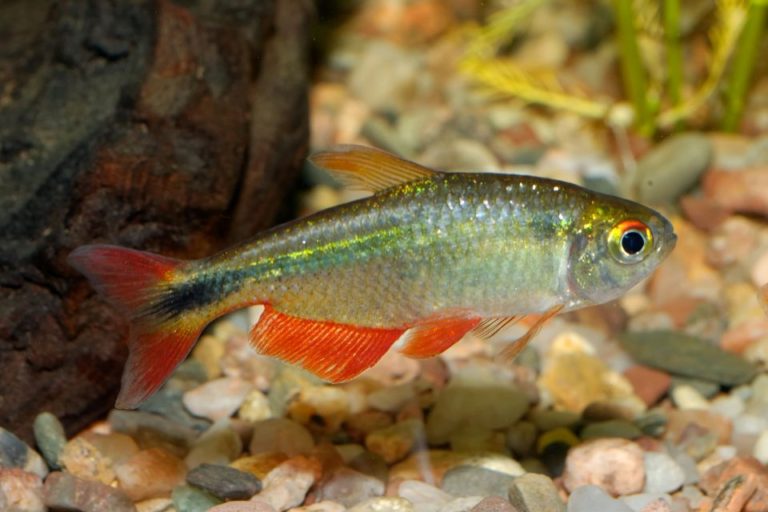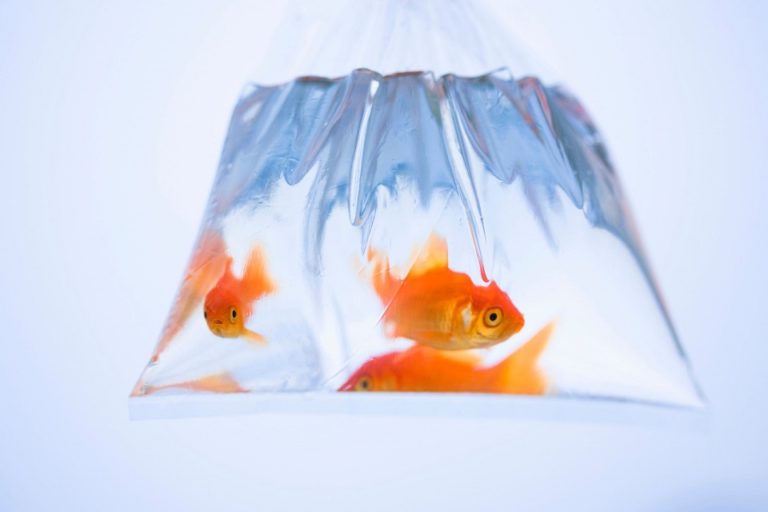Black Phantom Tetra Care Guide & Species Profile: Size, Lifespan and Diet

Black Phantom Tetra (Hyphessobrycon Megaloptera) are small and relatively peaceful tetra that can be kept in various settings and with several tank mates.
Their striking black and white coloration, long fins, and iridescent scales have made them popular among hobbyists. They prefer to live in schools of at least six individuals.
They are a good choice for even the most miniature aquariums at a maximum size of two inches. Black Phantom Tetras have been successfully bred in captivity and are relatively easy to spawn.
They require a tank environment with a highly oxygenated water flow and high temperatures of 80 degrees Fahrenheit. These Tetra species have a reputation for being finicky eaters.
Though their diet has been expanded to include more available foods in recent years.
| Quick Facts: | |
|---|---|
| Common Names : | Black Phantom Tetra, Phantom Tetra |
| Origin : | Native to upper Paraguay River Basin, South America. |
| Family : | Characidae |
| Scientific Name : | Hyphessobrycon megalopterus |
| Care Level : | Easy |
| Temperament : | Peaceful |
| Social : | Community friendly |
| Diet : | Omnivores |
| Size (average) : | 1 to 2 inches |
| Lifespan : | 4 to 5 years |
| Breeding : | Egg layer |
| Minimum Tank Size: | 20 - 30 gallons |
| Tank Environment : | Freshwater, Sand substrate, Tall aquarium plants, rocks, caves, and driftwood. Medium lighting |
| Temperature : | 72°F – 82°F (22 – 28°C) |
| Water Hardness : | 12 – 15 dGH |
| Water pH Level : | 6.0 - 7.5 |
Species Overview
Black Phantom Tetra is a small and peaceful species of Tetra fish that can be kept in freshwater aquariums. It is scientifically known as Hyphessobrycon Megaloptera and it belongs to the Characidae fish family.
They hail from the river basins of Guaporé River and Sao Francisco River in Western Brazil and Bolivia, where they naturally live in tropical water conditions with a pH between 6.0 and 7.5.
In captivity, Black Phantom Tetra requires a tank temperature between 72 and 82 degrees Fahrenheit (22 to 28 C). They are shoaling fish and will only thrive when kept in groups of at least six individuals; ideally, there should be 15 or more.
It gets their name from the dark pigment on their bodies, making them appear almost like they’ve been dipped in ink. While some may argue that these fish aren’t black, they certainly have a very dark coloration.
Their scales become even more iridescent and reflective in the aquarium as they move in front of light sources.
Black Phantom Tetra Size
Black Phantom Tetra size can vary depending on the species, age of the fish, and the environment they live in. The size of adult Black Phantom Tetra ranges from 1.25 to 1.75 inches long, though they may grow slightly more prominent.
Black Phantom Tetra Lifespan
In the wild, these Tetra species have been known to reach up to 5 years old or more. In a captivity environment, the Black Phantom Tetra lifespan is about 4 to 5 years but in some rare situations it can live up to 6 years under optimal care.
Behavior & Temperament
These fish species are popular shoaling fish species. They prefer to live in groups of at least 4 or more tetras, and the more, the merrier! While they will comfortably share a tank with other tetra species as long as they have at least six other members in their school.
it’s important to remember that these fish species are significantly smaller species and will need to be housed with other similarly-sized Tetras.
Mature Black Phantom Tetra can sometimes be slightly more aggressive than some of their counterparts, but as long as they’re put into a school that’s large enough, they will likely not bother any tank mates or show aggression toward them.
Black Phantom Tetra will generally ignore tank décor and other fish, but they need a heavily-planted aquarium. Live or plastic plants should be used to break up sightlines that allow them to see one another.
This heightens the chances of aggression in the school, so it’s best to take this into account when setting up their environment. Black Phantom Tetras are highly active swimmers, often darting around in the middle levels of the aquarium.
They’re not considered schooling fish, but they need plenty of room to swim freely to thrive. They will also appreciate some open space on top of their tank for them to rest near the surface and enjoy the light.
Appearance & Colors
The appearance of the Black Phantom Tetra is quite striking. They feature a dark body with iridescent scales and transparent fins, making them appear almost like they’ve been dipped in ink.
They have a white belly and the males are generally smaller than the females, but they’re very similar in appearance otherwise. If you can see them side-by-side, it’s easy to tell which one is male and female by looking at their fins.
Female Black Phantom Tetra will have more prominent dorsal and anal fins than males do. They feature a dark body with iridescent scales and transparent fins, making them appear almost like they’ve been dipped in ink.

Black Phantom Tetra Care
Black Phantom Tetra will thrive in a heavily planted tank with plenty of open swimming space. This species should be kept in schools of at least 6 tetras, and it’s essential to provide them with ample plant cover so they can dart into hiding if they feel the need to.
They are not picky eaters and will readily accept most types of fish food. They do best when in the middle levels of the aquarium, so live, or plastic plants should be used to create “caves” in their environment for them to hide in.
– Black Phantom Tetra Tank Size
The minimum Black Phantom Tetra Tank size would be at least 10 gallons per fish. Since it does well with groups it would be better if you have at least 30 gallons tank for a group of 4 fish. The bigger tank is best if you consider adding other tank mates.
They’re not picky about the pH level of their water, though they prefer it to be on the neutral side. In addition, these fish prefer soft water, so a good filtration system is important for them.
– Black Phantom Tetra Tank Setup
When you set up a tank for your Tetra fish, you might choose sand substrate or fine gravel substrate, that may feel the wild environment. Do not remember to add some aquarium rocks and driftwood pieces that allow them to hide and relax.
It prefers the middle levels of an aquarium with plenty of open swimming space. You can have a few plants to help break up the lines in their environment, but it’s important to leave the areas where they can hide so that they’re less stressed.
Black Phantom Tetra will thrive in a heavily planted tank with plenty of open swimming space. This species should be kept in schools of at least six tetras, and it’s essential to provide them with ample plant cover so they can dart into hiding if they feel the need to.
They’re not picky eaters and will readily accept most types of fish food. They do best when in the middle levels of the aquarium, so live, or plastic plants should be used to create “caves” in their environment for them to hide in.
– Water Conditions And Parameters
Black Phantom Tetra prefer freshwater that’s slightly on the acidic side, but they’re not picky otherwise.
- Water acidity range: 6.0 – 7.5 pH
- Hardness level: 12 – 15 dGH
- Water temperatures: 72°F – 82°F (22 – 28°C)
Having an aquarium water testing KIT might be helpful for regular water testing.
– Suitable Aquarium Plants
Black Phantom Tetra are fast eaters, so the plants you have in your tank need to be able to grow quickly enough to keep up with them. If they can’t, the tetras will tear them out by their roots or slowly starve as they try to find food around the plants.
As long as they can get to them without uprooting them or jumping out of the tank, these are great options for planting in an aquarium with fish like Tetras.
– Common Diseases And Prevention
Black Phantom Tetras are pretty tough to fish that tend to resist the most common diseases. However, they’re not immune, so preventing diseases is always better than treating them once they’ve set in.
The biggest problems you’ll have with your Black Phantom Tetra will likely stem from their tank environment. Make sure your filter isn’t pumping out too much of the dissolved solids found in tap water, and always keep an eye on the pH level of your aquarium.
If you notice your fish rubbing themselves against rocks or plant leaves, they might be experiencing swim bladder problems.
This can sometimes be fixed simply by feeding them foods that will help them process their air bladders more easily, but other problems might require more drastic action.
It will do best in water that’s slightly acidic, but they’re fairly hardy and will rarely come down with diseases if their environment is kept stable.
Make sure your tank is fully cycled before you add any fish, and always keep a close eye on the pH level of your aquarium.
Black Phantom Tetra Diet & Feeding
In the wild, Black Phantom Tetra feeds on both crustaceans and insects. In an aquarium environment, they’ll accept most types of fish food as long as it’s small enough to fit into their mouths.
Flakes are a great option if you’re looking for a good staple diet for your Tetra. They don’t have a high nutritional value, but they’ll provide your fish with the energy they need to make it through their day.
How Often Do You Feed Black Phantom Tetras?
Black Phantom Tetra will eat several times per day, and they’ll usually swim to the surface in search of food. If you notice yours aren’t eating as much as usual, make sure their tank is well-covered and that there’s no way for any fish to jump out when they’re feeding.
In general, feed your Tetra around three times per day. You’ll likely want to use small meals throughout the day instead of one large one since this will prevent any of it from going bad before they can get to it.
What Do Black Phantom Tetras Eat?
Black Phantom Tetra are omnivorous, but they prefer to eat smaller fish and crustaceans. They’ll usually forage for food along the bottom of the river or tank they live in in the wild.
What NOT To Feed Black Phantom Tetras!
Anything too large for the Black Phantom Tetra to eat will be ignored. If fed too many protein-rich foods, they can also develop intestinal issues, so try to stick with plants and smaller fish as their staple diet.
Frozen Or Live Black Phantom Tetra Foods?
Some tetras prefer frozen food over live food since they have a lower nutritional value. Live food will give your Tetra fish the nutrients they need, but if you notice they aren’t eating it, go ahead and switch them over to frozen food.
Additional Food Sources For Black Phantom Tetras
Black Phantom Tetra will eat most types of fish flakes or pellets, so if you want to supplement their diet with other foods, you can feed them foods such as worms or brine shrimp.
Feeding Frequency
In general, Black Phantom Tetra should be fed around three times per day. You don’t want to give them too much food at once since they might ignore some of it before it has a chance to go wrong.
Ensure their tank is fully covered so they won’t jump out when it’s feeding time, and permanently remove any uneaten food.

Gender Difference
Black Phantom Tetra isn’t known to have any distinctive differences between the genders, so you’ll likely only be able to tell males from females by their overall size. Males will typically grow a bit larger than females.
Breeding Black Phantom Tetra
Black Phantom Tetras are generally easy to breed if kept in an aquarium environment with plenty of vegetation. Unlike some tetras, they’ll breed in tanks without the need for extra special treatment.
The female will birth between 30 and 60 fry roughly two weeks after mating. The fry will start completely silver, but they’ll develop their shiny black scales within a few weeks.
Black Phantom Tetra Tank Mates
They aren’t generally picky when it comes to tank mates, but you’ll want to make sure they live in a tank that’s at least 30 gallons in size with other tank mates.
You can put other Tetras species into the same aquarium without much issue since they’re larger than most other tetra species.
Here is a list of compatible Black Phantom Tetra Tank Mates:
- Celestial Pearl Danio
- Chili Rasbora
- Zebra Danio
- Honey Gourami
- German Blue Ram
- Cockatoo Cichlid
- Dwarf Gourami
- Cherry Barb
Origin And Distribution
The origin of the Black Phantom Tetra in South America. People have reported that they found Hyphessobrycon megalopterus in the river basins of Guaporé River and Sao Francisco River in Western Brazil and Bolivia.
When it’s not breeding season, Black Phantom Tetras will travel through schools of closely related fish so they can eat more easily. They aren’t picky eaters by any means, so they’ll happily eat fish flakes or pellets if you want to give them a treat.
They also eat invertebrates that fall into their tank, and they aren’t scared of predators. Because of this, it can be a bit aggressive if you’re housing them with other types of smaller fish.
Frequently Asked Questions
Are Black Phantom Tetras Aggressive?
Black Phantom Tetras don’t generally have aggressive tendencies, but they get a bit more territorial than most other types of tetras.
They’ll usually chase away any fish that tries to eat their food within seconds of noticing, and they’re also known to nip at the fins of other fish.
If you’re housing them in a tank with other types of fish, you’ll need to make sure that the Black Phantom Tetras don’t see them as a threat.
If you have another type of fish that’s smaller than them, you’ll want to make sure they have plenty of space away from it. The Black Phantom Tetraswill usually be able to leave them alone if there’s a lot of room between them.
Are Black Phantom Tetras Hardy Fish?
Black Phantom Tetras are generally hardy fish, so you won’t have to worry too much about them getting sick or injured. However, they aren’t adamant about water conditions, so their tank will need regular maintenance if you want to keep them healthy.
If your Black Phantom Tetras do get sick, you might notice a few issues. They may be incredibly picky about the types of food they eat, and their fins might burn or tear if they try to swim through parts of the tank that have potent currents.
Are Phantom Tetras Fin Nippers?
Black Phantom Tetras aren’t aggressive when they’re not around other types of fish, but they are known to nip at the fins of other fish in their tank. Black Phantom Tetras are also known to nip at fish fins if they think there’s not enough space between them.
This can be especially frustrating when you’re trying to house your Black Phantom Tetras in a tank with tiny or young types of tetra because it might make it difficult for them to eat their food.
You can stop them from nipping at the fins of other fish by making sure there’s plenty of space between them and giving them more food than usual.
This is especially useful if you’re housing your fish in a tank with tiny or young types of Tetra – they’ll usually leave them alone as long as they have enough to eat.
Do Black Phantom Tetras Eat Shrimp?
Black Phantom Tetras don’t usually try to eat small or medium-sized fish in their tank when they’re not breeding season. They eat invertebrates that fall into their tank, so you might want to add a lid if you have small shrimp or snails in your aquarium.
This is especially true if the Black Phantom Tetras live in a tank with tiny or young types of tetra – the Black Phantom Tetras might see them as food, and they can fit into smaller spaces than most other types of fish.
If you do notice that your Phantom Tetras are eating shrimp or snails, you’ll want to remove them from the tank as soon as possible.
Can Black Phantom Tetras Live With Bettas?
Black Phantom Tetras and Bettas can live together in a tank, but this isn’t usually a good choice. These Tetras are medium size fish, so they might see Bettas as prey if they’re not separated.
Betta fish also need plenty of space to swim – they usually need at least a 5 gallons tank on their own, so housing them with Black Phantom Tetras is usually a bad idea.
If you want to keep Bettas and Black Phantom Tetras together, there are a few things you’ll need to do. The bettas will need an aquarium of at least 10 gallons, and you’ll need to be sure that the bettas have their hiding spots, so they aren’t at risk of being eaten.
If you notice your Black Phantom Tetras are trying to be aggressive on your Bettas, you’ll need to separate them immediately.
How Many Black Phantom Tetras Can You Have In A 10 Gallon Tank?
Black Phantom Tetras can be kept in a 10 gallons tank with other fish species, but this isn’t the best tank size for them. They need plenty of space to swim.
One Black Phantom Tetra needs at least 5 gallons on its own, and you’ll need to make sure it has plenty of hiding places.
How Much A Black Phantom Tetra Cost?
Black Phantom Tetras aren’t very expensive because they’re not hard to breed. You can usually find them for sale at a local pet store. Finding a local breeder locally is also an option and might be convenient to you.
If you need help finding one, many online communities can help you find Black Phantom Tetras for sale. In the US market, you will be able to find them for around $5. Online prices are not a big difference, but you have to pay for the shipping.
Final Thoughts
These Tetras are beautiful freshwater fish species that can make excellent aquarium pets. If you plan to keep them in your fish tank there are some things you’ll need to keep in mind.
They are smaller size fish that nip at the fins of other types of fish, so they might try to eat tiny or young types of tetra if they don’t have enough room.
You’ll also want to look for Black Phantom Tetras that are fully grown if you buy them online. Your local pet stores might sell young adult fish.
If you keep these things in mind and provide your Black Phantom Tetras with the right tank size and plenty of food, you’ll be able to keep them healthy and happy.


